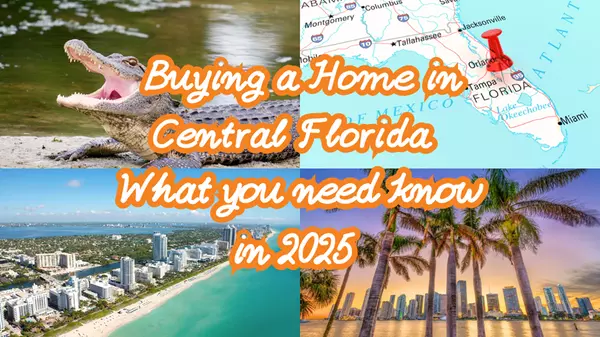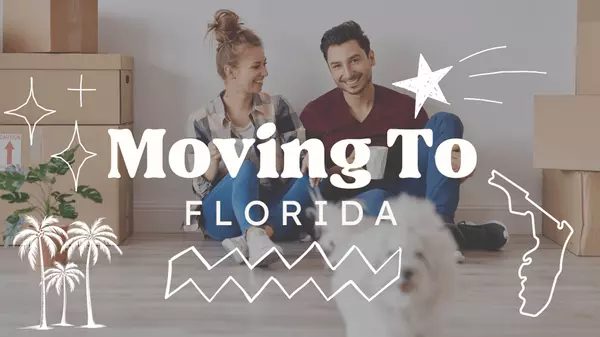Moving to Central Florida? Here's what the locals wish they knew first

Welcome to the Heart of the Sunshine State
After helping hundreds of families relocate to Central Florida over the past several years, I've learned that the transition goes much smoother when newcomers know what they're really getting into. Sure, everyone knows about Disney World and year-round sunshine, but there's so much more to understand about life in the heart of Florida.
Central Florida offers an incredible mix of opportunities from booming job markets in Orlando's tech corridor to lakefront living in Winter Haven, from master-planned communities like Lake Nona to the horse country charm of Ocala. The region attracts families, retirees, and young professionals with its promise of no state income tax, endless recreation, and that famous Florida lifestyle.
But here's what I tell every client: the families who thrive here are the ones who understand both the perks and the realities before they arrive. Let me share what current residents wish they'd known from day one.
Theme Park Tourism Isn't Just a Weekend Thing
Living near the world's most famous theme parks sounds magical until you're sitting in I-4 traffic on a Tuesday afternoon, wondering why it's taking 45 minutes to drive 15 miles. Tourism is Central Florida's biggest industry, which means it touches daily life in ways newcomers don't always expect.
"I thought tourist traffic would just be weekends and holidays. Boy, was I wrong. Summer mornings, spring break, even random Tuesdays can turn your commute into a crawl." - Sarah M., Orlando resident since 2019
The I-4 corridor from Tampa through Orlando to Daytona Beach sees millions of visitors annually. If your daily commute involves this stretch especially between Disney World and Universal Studios plan extra time and consider alternate routes through Winter Park or via the 417 toll road.
Dining and entertainment costs also reflect the tourist economy. A family dinner near International Drive might cost twice what you'd pay in Clermont or Lakeland. The flip side? Annual passes to theme parks often pay for themselves after just a few visits, and many residents enjoy local discounts and special events.
Smart Move: Consider neighborhoods like Winter Garden, Clermont, or Mount Dora close enough for easy theme park access but far enough to feel like authentic Florida communities.
The Weather Has More Personality Than You Think
Everyone expects hot summers and mild winters, but Central Florida's weather has some unique characteristics that catch newcomers off guard. The humidity isn't just about comfort it affects everything from your hair routine to home maintenance.
Summer thunderstorms roll in almost daily between 2-6 PM, often bringing spectacular lightning displays. Central Florida holds the title as America's lightning capital, which means outdoor activities require weather awareness and good timing.
Hurricane season runs June through November, with peak activity typically August through October. While direct hits are relatively rare in inland Central Florida, the region does experience tropical storms and the outer bands of major hurricanes. This reality affects insurance costs and requires some basic preparedness planning.
Temperature Reality Check: When Minneapolis residents talk about "cold," they mean snow and ice. When longtime Central Florida residents mention cold, they're talking about 40-degree mornings that feel shocking after months of 80+ degree weather. Pack a few warm layers—you'll need them more than you think.
Winter months bring some of the most beautiful weather in the country, which unfortunately coincides with peak tourist season and higher costs for everything from hotel rooms to restaurant reservations.
Central Florida Is More Diverse Than Disney
Orlando's economy extends far beyond theme parks. The Lake Nona area has become a major life sciences and medical technology hub, home to companies like KPMG, Deloitte, and the VA Medical Center. The University of Central Florida, one of the largest universities in the nation, drives innovation in engineering, medicine, and technology.
Lakeland sits at the heart of Florida's logistics network, with major distribution centers for Amazon, Publix, and other national companies. The job market here focuses on supply chain management, transportation, and agriculture particularly citrus farming.
Regional Personality Guide:
|
Area |
Character |
Best For |
|
Lake Nona |
Modern, planned, tech-focused |
Young professionals, families |
|
Winter Park |
Arts, culture, upscale dining |
Empty nesters, culture enthusiasts |
|
Celebration |
Family-oriented, Disney-adjacent |
Families with young children |
|
Mount Dora |
Small-town charm, antiques, festivals |
Retirees, weekend getaway feel |
|
Clermont |
Hills, lakes, outdoor recreation |
Active families, water sports |
Winter Haven's chain of lakes makes it a boating and fishing paradise, while Ocala's horse farms give it a distinctly rural, Southern feel that surprises visitors expecting wall-to-wall development.
Your Dollar Goes Different Distances Here
The absence of state income tax is real and significant a family earning $75,000 annually might save $3,000-4,000 compared to states like New York or California. However, property taxes vary significantly by county, and some areas levy additional municipal taxes that can add up.
Housing costs fluctuate dramatically based on proximity to attractions and amenities. A three-bedroom home in Kissimmee near Disney might cost $350,000, while a similar home in Clermont runs $400,000, and the same house in Winter Park could easily exceed $500,000.
Hidden Costs Newcomers Overlook: Air conditioning runs almost year-round, with summer electric bills often hitting $200-300 monthly for average-sized homes. Homeowners insurance includes windstorm coverage, adding to annual costs. Pool maintenance, if you're buying a home with a pool (and many have them), runs $100-150 monthly.
Grocery costs generally run slightly higher than the national average, partly due to transportation costs for items shipped into Florida. However, fresh citrus, seafood, and year-round local produce can offset some expenses.
Dining out varies wildly. Tourist areas charge premium prices, while local neighborhoods offer excellent value. Learning the difference between "tourist traps" and "local favorites" becomes essential for budget-conscious families.
Traffic and Transportation Realities
I-4 construction seems perpetual, with ongoing projects designed to handle increasing population and tourism growth. The stretch between Orlando and Tampa, in particular, requires patience and planning. Current projects include express lanes and interchange improvements, but construction zones create bottlenecks and delays.
Transportation Truth: Outside of downtown Orlando, public transportation is limited. SunRail connects some northern and southern suburbs to downtown Orlando, running weekdays only with limited weekend service. Most residents need reliable vehicles for daily life.
The 417, 429, and 528 toll roads provide faster alternatives to I-4 but add up quickly for daily commuters. A monthly toll bill of $50-100 isn't unusual for families using these routes regularly.
Central Florida's geography is more spread out than newcomers often expect. "Everything's 20 minutes away" becomes a common phrase, whether you're going to work, shopping, or recreational activities.
Some communities like Baldwin Park, Winter Park, and downtown Orlando offer walkable lifestyles with restaurants, shops, and services within walking or biking distance. These neighborhoods typically command premium prices but offer alternatives to car-dependent living.
Your New Florida Lifestyle Awaits
Moving to Central Florida means joining a dynamic, growing region that offers genuine opportunities for career growth, family fun, and year-round outdoor living. The key to loving life here is choosing the right community that matches your priorities whether that's school districts, commute times, recreational activities, or community amenities.
Every family's perfect Central Florida community looks different. Some thrive in the energy of Lake Nona's innovation district, while others prefer the lakes and hills of Clermont or the historic charm of Mount Dora. The region's diversity means options for every lifestyle and budget.
Ready to explore which Central Florida community fits your family's needs? I'd love to discuss your priorities and show you neighborhoods that match your vision of Florida living. The transition goes smoothly when you have local expertise guiding your decisions.
Frequently Asked Questions (FAQ)
What's the best time of year to move to Central Florida?
Fall through early spring offers the most comfortable weather for moving and exploring neighborhoods. October through April means lower humidity, fewer afternoon thunderstorms, and more pleasant temperatures for house hunting. However, this coincides with peak tourist season, so expect higher costs for temporary housing and moving services.
How much should I budget for air conditioning costs?
Expect $150-300+ monthly during summer months depending on home size, efficiency, and personal comfort preferences. Newer homes with high-efficiency HVAC systems and good insulation can significantly reduce costs. Many residents program thermostats to run less during peak rate hours and more during off-peak times.
Which areas offer the best schools for families?
Winter Park, Windermere, Lake Nona, and parts of Seminole County consistently rank among Florida's top school districts. Orange County has both excellent schools and lower-performing ones, so research specific school zones rather than just county-wide ratings. Many newer developments like Lake Nona and Horizon West have built schools designed to handle growth.
Is flood insurance necessary throughout Central Florida?
Required in designated flood zones, but recommended for most areas due to heavy rainfall patterns and hurricane potential. Even areas not in flood zones can experience flooding during major storm events. The cost varies based on elevation and proximity to water bodies, typically ranging from $400-1,200 annually.
How far should I live from theme parks to avoid tourist traffic?
Generally 20+ minutes from major attractions provides a good balance of access and local community feel. Communities like Clermont, Mount Dora, Winter Garden, and Sanford offer easy theme park access without daily tourist traffic impact. The trade-off is longer commute times if you work in central Orlando.




